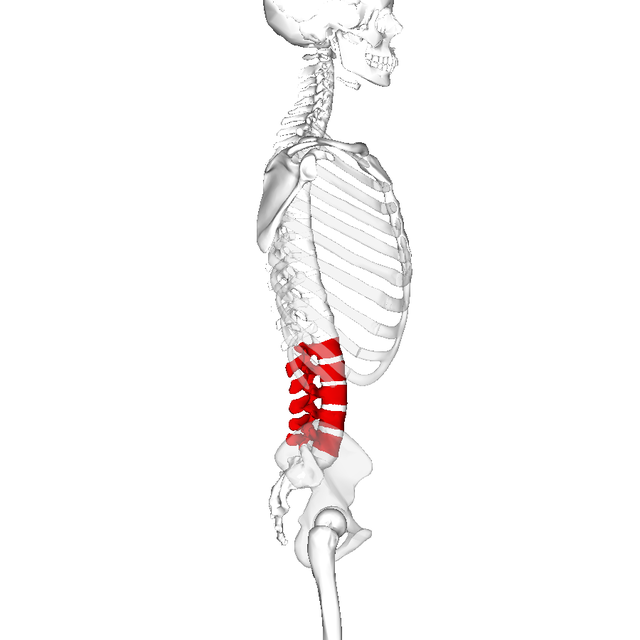One Minute Anatomy: The Lumbar Spine
The video above is a very short overview of our majestic lumbar spine and the latest in our One Minute Anatomy series.
Our spine can be broken down into four sections. 
At the top, we have the cervical spine or the neck. The cervical spine, like the lumbar spine, curves in.
Below the cervical spine is the thoracic spine which curves slightly out or back. Our ribs all attach to the thoracic spine.
Then comes the lumbar spine which curves out like the cervical spine. The curves of the lumbar and cervical spine are meant to be identical but that is a difficult ideal to find.
Below the lumbar vertebrae, we have the sacrum— five bones at birth that solidify as we stand and begin to walk. The sacrum curves out like the thoracic spine created four balanced curves.
But the star of this show is the lumbar spine which is a distinctly human feature.
No other animal has a curved lower spine which is why no other animal can walk long distances on two legs.
Being upright is complicated and it’s the curve of the lumbar spine that allows us to stand up straight and walk the way we do.
The lower spine also acts as a bridge between the spine and the pelvis.
But the main job of these five big bones in the lower spine is to bear and transfer weight through the spine to the pelvis and legs.
To that end, there is not a lot of movement available in these bones. They can flex and extend but they barely have any ability to twist.
This is interesting because when you walk every successful step you take is a spinal twist, but that twist is not really coming from the lumbar.
The lumbar spine is designed for strength and stability and we owe it to ourselves to position it to do its job best.
Check out other One Minute Anatomy Videos: Here, here, & here.
